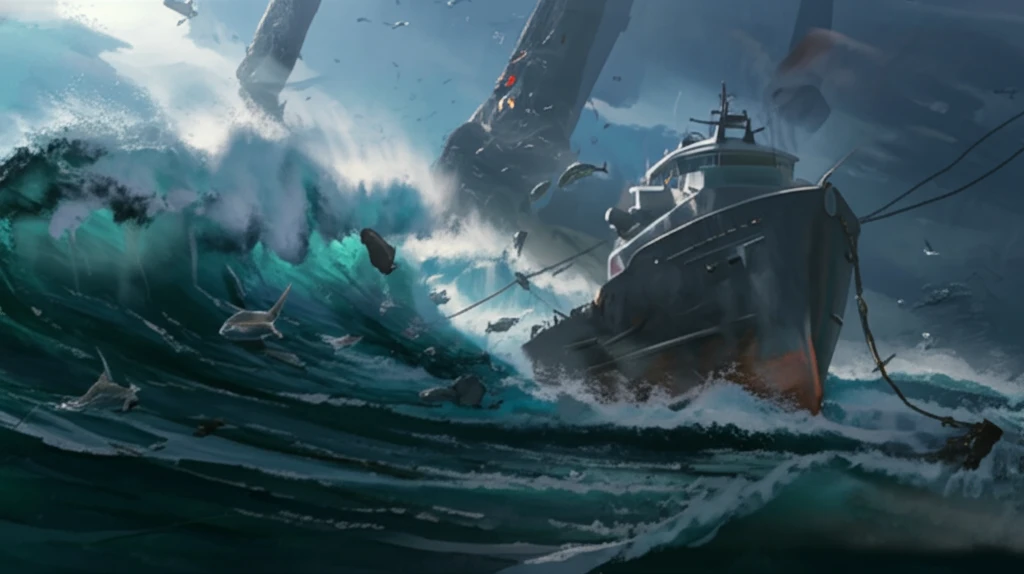
Aquaculture Under Pressure: Can Fish Farms Weather the Storms?
"New research reveals the hidden dangers of coupling well boats with fish farms in rough seas, threatening the stability of the aquaculture industry."
The aquaculture industry is a vital source of seafood, but its growth faces increasing scrutiny. Sustainability is paramount, and understanding the environmental impact of fish farms is crucial for securing the industry's future. A key aspect of this involves examining the interaction between fish farms and the vessels that service them, particularly well boats, which transport live fish.
Traditionally, well boats and fish farms were studied separately. However, recent research highlights the need to analyze them as a coupled system, especially when operating in challenging marine conditions. Irregular waves and strong currents can significantly impact the structural integrity of fish farms and the operational safety of well boats. Ignoring these factors could lead to catastrophic failures.
A new study published in the Journal of Fluids and Structures dives deep into the dynamic response of a coupled well boat-fish farm system in long-crested irregular waves and current. Using advanced numerical simulations, researchers investigated how the presence of a well boat affects the fish farm's structural loads and operational limits. The findings reveal some alarming insights that could reshape how aquaculture operations are managed.
The Unexpected Impact of Well Boats on Fish Farms

The study employed complex numerical models to simulate the behavior of a well boat operating near a fish farm in various sea conditions. These models considered factors like wave height, wave period, current velocity, and the positioning of the well boat relative to the fish farm. The simulations revealed that the presence of a well boat can dramatically increase the loads on the fish farm's anchor lines and floating collar.
- Increased Anchor-Line Loads: Well boats add extra weight and drag to the system, pulling harder on the anchor lines that keep the fish farm in place.
- Amplified Floating Collar Stresses: The interaction between the boat and the fish farm can create concentrated stress points on the floating structure, potentially leading to fractures or complete failure.
- Resonance Effects: Certain wave frequencies can cause the well boat and fish farm to oscillate in sync, amplifying the loads on the system.
Navigating the Future of Sustainable Aquaculture
These findings carry significant implications for the aquaculture industry. As fish farms move further offshore into more exposed environments, the need for robust structural designs and operational protocols becomes even more critical. Integrating well boats into the design phase and considering their impact on the overall system dynamics is essential for ensuring the long-term sustainability of aquaculture operations. Further research into alternative mooring systems, vessel designs, and operational strategies is needed to minimize the risks associated with coupled well boat-fish farm systems.
